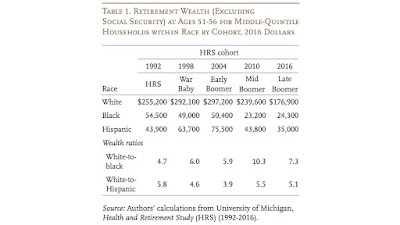From a press release:
U.S. Senator Mike Crapo (R-Idaho), Ranking Member of the Senate Finance Committee, and Senator Todd Young (R-Indiana), Ranking Member of the Finance Committee’s Subcommittee on Social Security, Pensions and Family Policy, pressed the Acting Commissioner of the Social Security Administration on when Congress can expect to receive the annual report on the Supplemental Security Income (SSI) program.
The delay in reporting to Congress on the program relative to the statutory deadline of May 30 is the longest in the history of the report, and comes on the heels of the longest delay ever in the Social Security and Medicare trustees report. ...
I can't even imagine a political motivation for delaying this mundane report. Just accept the reality that I have to accept every day. Social Security isn't hitting on all cylinders. Work isn't getting done in a timely manner. This has to do with general understaffing and reduced efficiency because almost everyone is working from home. It sucks but there it is.






















